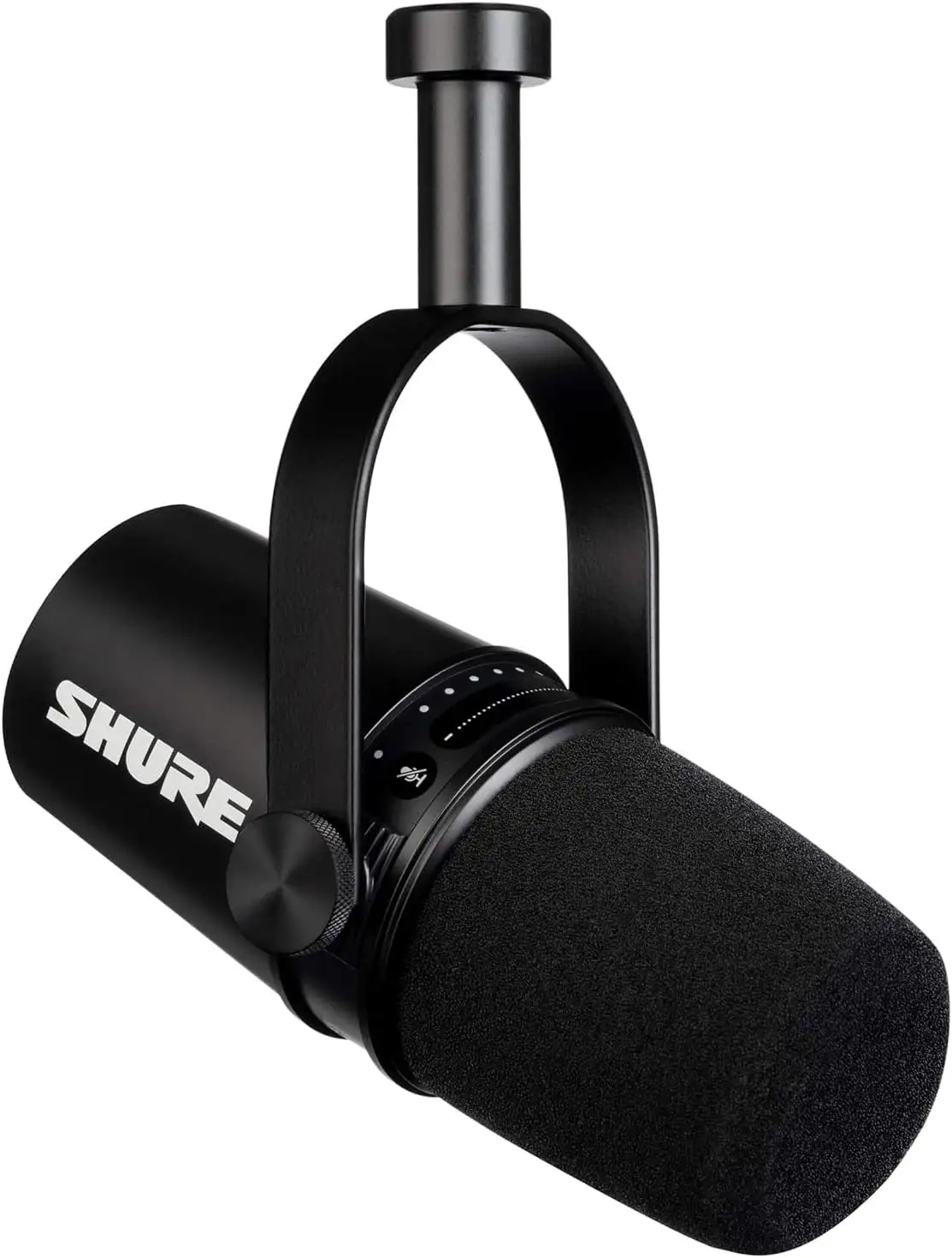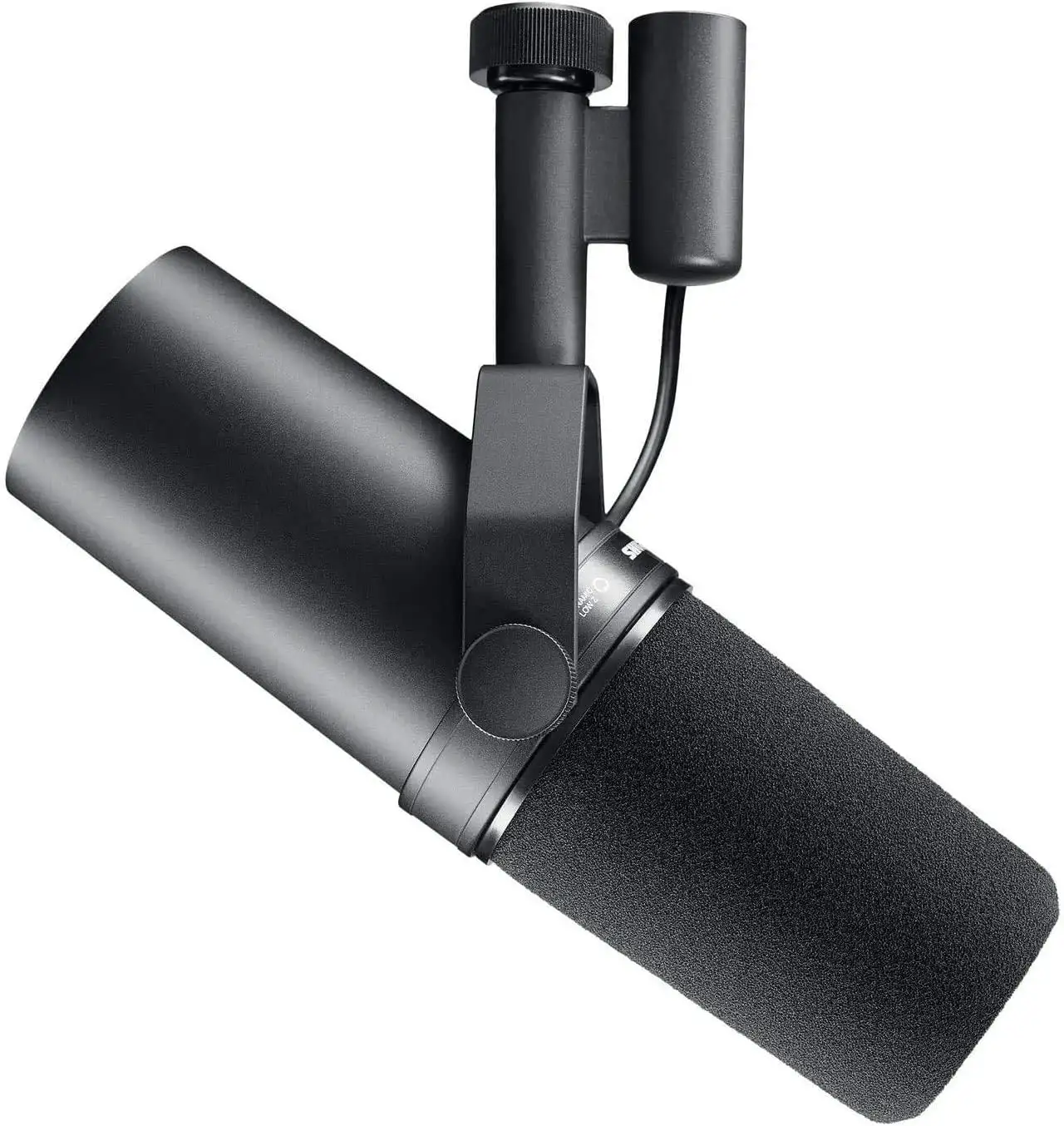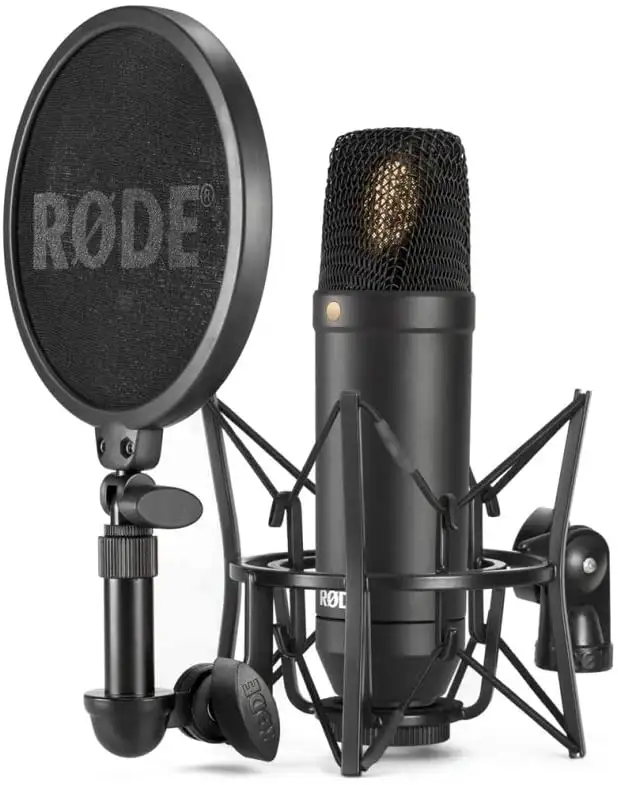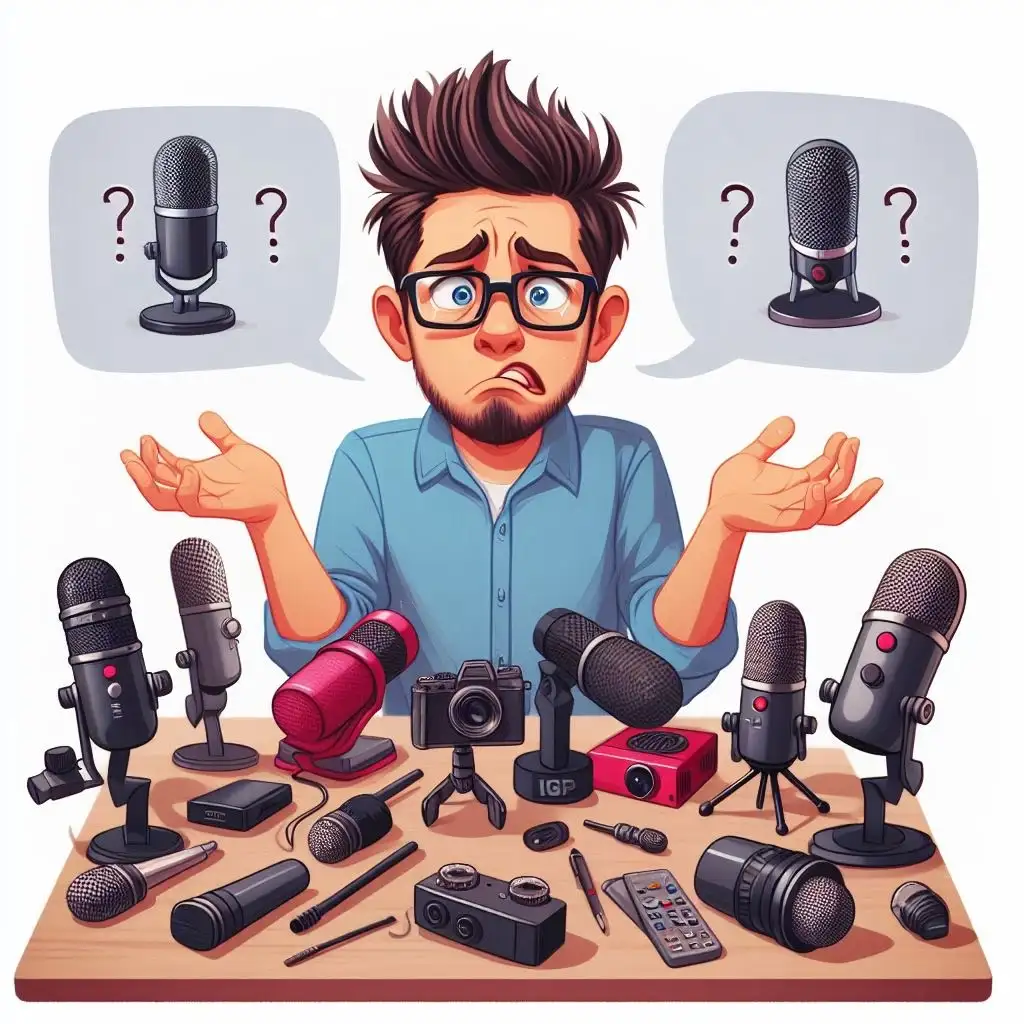Imagine you’re watching a video or listening to a podcast. The first thing that hits you isn’t the flashy graphics or the stunning visuals – it’s the sound. Clear, crisp audio draws you in, making the content feel professional and polished. That’s because audio quality is a big deal in content creation. It can be the difference between someone sticking around for your entire video or podcast, or bailing out after a few seconds because they can’t stand the scratchy noise.
Now, think about your own content. You want your voice to be heard, right? Well, it’s not just about having something to say; it’s about how you say it. The right microphone turns your whispers into commands, your stories into experiences, and your advice into wisdom. It’s not just a tool; it’s your secret weapon. So, let’s make sure we pick the one that’s going to show off your sound just the way you intend. Trust me, your audience will thank you for it.
Understanding Different Types of Microphones
Alright, let’s dive into the world of microphones together. Think of this as a backstage pass to understanding what makes each mic tick and how they can amplify your content creation game.
Dynamic Microphones
Picture a rock concert. That rugged mic the lead singer is belting into? That’s likely a dynamic microphone. These mics are the tough guys of the audio world. They’re built to handle loud sounds, drops on the stage, and everything in between. Dynamic microphones are your go-to for anything that involves high volume or the great outdoors. They can take a beating and still deliver that punchy sound needed for live events, interviews, and even your energetic vlogging sessions.
Pros: They’re durable, relatively inexpensive, and don’t need an external power source.
Cons: They might not capture the full nuance of sound as well as other mics, making them less ideal for studio-quality voiceovers.
Condenser Microphones
Now, envision a serene studio setting. That sleek microphone with a pop shield in front of it? That’s your condenser microphone. They’re the sensitive souls, capturing sound with precision and detail. If your content includes voice-overs, singing, or you need to pick up the subtle inflections in speech, a condenser microphone might be your best friend.
Pros: Excellent sound quality with a wide frequency response. They’re perfect for capturing vocal subtleties.
Cons: They’re more sensitive to loud noises and can be pricier. Plus, they usually require external power, like phantom power from a mixer or audio interface.
Ribbon Microphones
Now, let’s get a bit vintage. Ribbon microphones are the classic cars of microphones—they have a rich history and bring a warm, old-school sound to your recordings. They’re actually quite similar to dynamic mics but use a thin ribbon to pick up sound. They’re fantastic for capturing the warmth in vocals, the smoothness of string instruments, and they give your podcasts or audiobooks that golden-age radio vibe.
Pros: They produce a warm, natural sound that’s great for certain musical instruments and spoken word.
Cons: They’re quite delicate and can be the most expensive. Also, they’re not ideal for high-volume recording scenarios.
Remember, choosing the right microphone is like choosing the right pair of shoes. You wouldn’t wear flip-flops to climb a mountain, right? The same goes for selecting a mic; you need the right one for the job. In the next sections, we’ll walk through how to match your content demands with the perfect microphone choice, considering factors like environment, specific content type, and technical requirements.
Factors to Consider When Choosing a Microphone

Pickup Patterns
Let’s talk about pickup patterns—think of these as the microphone’s “listening” direction. You’ve got options like cardioid, which picks up sound primarily from the front, making it a great choice for podcasting where you’re speaking directly into the mic. Omnidirectional mics, on the other hand, catch sound from all around, perfect for capturing the vibe of a live room or group conversation. And then there’s bidirectional, which picks up sounds from both the front and back, ideal for face-to-face interviews.
The key is to match the pickup pattern to your recording environment. Got a noisy background? A cardioid mic will help keep that at bay. Recording a roundtable discussion? An omnidirectional mic will make sure you don’t miss a word.
Sensitivity and Frequency Response
When we talk about sensitivity, we’re looking at how well a microphone can pick up quiet sounds. If you’re working in a controlled studio environment, a sensitive mic will catch every nuance of your voice. But if you’re out in the field, too much sensitivity might just catch more noise than you bargained for.
Now, frequency response is all about what sounds the mic can actually capture. A wider frequency response means a more accurate representation of the sound. Think about it – if you’re recording music, you want those highs and lows to be just right.
Connectivity Options
The battle of USB versus XLR microphones is real. USB mics are fantastic for plug-and-play simplicity, especially if you’re a solo act. But if you’re looking for the best sound quality and flexibility, XLR mics might be your jam. They do require additional gear, like an audio interface or mixer, to get your sound into your computer, but the result is worth it.
Durability and Build Quality
Durability isn’t just about dropping your mic and hoping for the best. It’s about how well the mic holds up to the rigors of your content creation. On-the-go vloggers need something that can survive a tumble, while studio creators might prioritize sound quality over ruggedness.
Build quality also plays a big role in how your mic performs over time. A well-built microphone will not only last longer but also maintain its sound quality throughout its life. So, think about the long game when picking out your microphone.
Consider Your Recording Environment
Imagine you’re in a cavernous cathedral and you whisper, “Hello.” That echo that bounces back at you is acoustics in action. Now, bring it back to where you record. The shape of your room, the furniture inside, the walls – they all play a part in how sound travels and is captured by your mic. You want to find a spot where your voice sounds natural, not too echoey or flat. Think of your room as a hidden member of your content creation team. It sets the stage for how well your microphone will perform. So play around with your setup. Hang some curtains, throw down a thick rug, or even set up some foam panels to get the acoustics just right. It’s all about creating a space where your microphone can shine and your voice can resonate just the way you imagined.
Now, let’s tackle the invisible elephant in the room – background noise. It’s the ticking clock, the humming fridge, the distant traffic. These sounds can creep into your content and distract your listeners from the magic of your message. Put on your detective hat and listen. Identify those noise culprits and figure out how to minimize them. Maybe it’s as simple as closing a window or as complex as soundproofing your space. Remember, the quieter your environment, the cleaner your audio will be. And in the world of content creation, clean audio is king. Your audience might not always notice the absence of background noise, but they’ll definitely notice when it’s there. So be proactive and give your content the clear, uninterrupted soundstage it deserves.
Each of these factors can deeply influence the quality and suitability of a microphone for your specific needs. From acoustic properties to the robustness against the elements, these considerations form a checklist that guides you toward the right investment. Whether you’re a musician, podcaster, or filmmaker, using the right mic can elevate your project from good to exceptional.
Additional Equipment Needs
Pop Filters
You know those pesky ‘p’ and ‘b’ sounds that tend to burst out like mini explosions when you’re recording? Those are called plosives, and they can really mess with your audio quality. Enter the pop filter—a simple screen that you place between you and your mic. It’s like a little superhero that diffuses those blasts of air before they hit the mic, keeping your audio plosive-free and clean. Trust me, it’s a small investment that makes a big difference in the polish of your sound.
Shock Mounts
Imagine you’re deep into recording a great piece of content, and then you accidentally bump the mic stand or the table it’s on. That jarring noise is the last thing you want in your recording. That’s where shock mounts come into play. They cradle your microphone in a way that absorbs vibrations and handling noise, almost like a cushion of soundproofing. With a shock mount, those little bumps won’t send shockwaves through your audience’s ears.
Stands and Booms
Now let’s talk about how you’re going to hold your mic. You’ve got two main choices here: the reliable stand or the versatile boom arm. A stand is solid and great if you’re going to stay put, but a boom arm gives you the flexibility to move the mic closer or further away as needed – it’s all about your space and style. Adjustable booms are especially handy if you’re switching between sitting and standing or if you’re sharing the space with guests of varying heights.
Choosing between a fixed stand and an adjustable boom comes down to your recording habits. Do you need the freedom to move around, or is your recording setup static? Your choice here sets the stage for comfort and convenience during your recording sessions.
Setting Your Budget
When it comes to selecting a microphone, your budget is obviously a key player. But how do you decide how much to spend? Start by considering the role your content plays in your life. Is this a hobby, a side gig, or your full-time job? The more you rely on the quality of your content for income, the more you should consider investing in your microphone.
Let’s be honest, the price range for microphones can be as vast as the ocean. You could go for a budget-friendly option that gets the job done, or you could spring for a high-end piece that’s an audiophile’s dream. But remember, the most expensive mic isn’t always the best for your specific needs.
Here’s the deal: balance cost with quality. It might be tempting to go for the cheapest option, but poor audio quality can turn off viewers or listeners faster than you can say “soundcheck.” On the flip side, breaking the bank for features you don’t need won’t make your content any better.
Think about what you need your microphone to do. Are you mainly recording voice-overs in a quiet room? A mid-range condenser mic could be perfect. Need something that can handle the outdoors and a bit of rough handling? A dynamic mic might be your match. The goal is to buy the best microphone your budget allows that meets the demands of your content.
Also, consider longevity. A more expensive mic that lasts longer and performs better over time can be a smarter investment than a cheap one that’ll need replacing every year. And don’t forget to factor in any extras you’ll need, like stands, cables, or audio interfaces, which can add to the overall cost.
Ultimately, setting your budget for a microphone is about understanding the value it brings to your work. It’s a tool that can elevate the professionalism of your content, so weigh your options, do your research, and invest in a microphone that will do justice to your voice and your vision.
Budget-Friendly Microphone Recommendations
Alright, let’s chat about the budget microphones tailored to fit your specific scenarios. You’ve got a world of sounds to capture, and just like a chef selects the perfect knife for slicing, dicing, or carving, you need the right mic for your audio feast. So, let’s slice through the noise and carve out the best options for you.
Shure MV7: For the Solo Podcaster

You, my friend, are the solo act, the voice that carries stories through the airwaves. What you need is a mic that makes your voice sound as smooth as butter. Enter the Shure MV7, a dynamic microphone that has been crafted for creators like yourself. This USB/XLR hybrid mic offers versatility and professional-quality sound that can make even a humble home studio sound like a professional recording booth. It’s got voice isolation technology to keep the focus on you and only you, which is ideal for when the world outside doesn’t get the memo that you’re recording.
Rode VideoMicro: For the Traveling Vlogger

If you’re always on the move, documenting your adventures for the world to see, you need a mic that’s as mobile and ready for action as you are. The Rode VideoMicro is compact, doesn’t need a battery, and mounts right onto your camera. It’s a no-brainer for catching high-quality sound whether you’re whispering in front of a waterfall or chatting in a bustling city square.
Audio-Technica AT2020: For the Home Musician

Got an instrument in one hand and a song in your heart? The Audio-Technica AT2020 is a fantastic choice for the home musician looking to record crystal-clear audio tracks. This condenser microphone captures a wide range of frequencies with precision, ensuring that every strum, beat, and note is heard in detail. Its cardioid pattern minimizes pickup of sounds from the sides and rear, reducing the chance of unwanted room noise contaminating your music magic.
Shure SM7B: For the Pro Streamer

Streaming is serious business, and you’re the star of the show. To keep your audience hanging on every word, the Shure SM7B is the go-to choice. It’s the heavyweight champion of streaming mics, turning your gaming commentary or live Q&A into a broadcast-quality production. Yes, it’s a bit of an investment, but your voice will have the polish of a seasoned broadcaster, and your followers will notice.
Zoom H5: For the Interviewer

If capturing the heart and soul of conversations is your aim, you’ll want something like the Zoom H5 portable recorder with its interchangeable mic capsules. It’s like having a full audio studio in the palm of your hand— versatile enough to record anything from a one-on-one sit-down to a roundtable discussion. And when you’re on the field, the H5’s durability and ease of use make it a reliable companion for capturing those spontaneous interviews.
Sennheiser MKE 600: For the Aspiring Filmmaker

Creating the next indie hit requires not just a keen eye for visuals, but also an ear for high-fidelity sound. The Sennheiser MKE 600 shotgun microphone is your ticket to cinematic audio. It’s designed to focus on the sound coming from the direction the camera is pointing while ignoring unwanted background noise. Whether you’re directing a quiet intimate scene or an action-packed short, this mic will ensure your audience hears every line of dialogue with clarity. The MKE 600’s ability to isolate sound makes it a favorite for shooting in noisy environments, so your film’s audio is crisp, clear, and captivating.
Rode NT1: For the Voice Actor

Voice acting requires capturing the full range of emotions and nuances in your performance. A microphone like the Rode NT1, with its low self-noise and high sensitivity, is a superb choice for recording voiceovers. It captures every subtle inflection and tone, ensuring that your character’s personality shines through. The NT1 is famously paired with a pop shield and shock mount, which means your recordings will be free from plosive noises and vibrations, allowing for a clean, professional sound.
Wrapping up
You’ve journeyed through the nuances of choosing a microphone, and now you stand at the precipice of your content creation adventures. Remember, the clarity of your audio can make or break the connection with your audience. It’s the vessel that carries your message, your stories, and your personality to the world.
So, take a moment to reflect on what you’ve learned. You now understand the differences between dynamic, condenser, and ribbon microphones and what they can bring to your projects. You’ve considered pickup patterns, sensitivity, frequency response, and connectivity options—each a key ingredient in the recipe for impeccable sound.
You’ve contemplated the importance of durability and the acoustics of your recording environment, ensuring that your voice is heard as it was meant to be—clear, true, and without distraction. And let’s not forget the additional equipment like pop filters, shock mounts, and stands that can elevate your audio quality to professional heights.
As you set your budget, balance the scales of cost and quality. Invest in a microphone that suits your needs, complements your talent, and amplifies your passion. Remember, this isn’t just about buying a piece of technology; it’s about investing in your voice and the stories you tell.
You’re now equipped with the knowledge to select a microphone that will showcase your content in its best light. Don’t shy away from making an informed choice that aligns with your ambitions. Great audio is not just an advantage; it’s a necessity. Go forth and create content that resonates, captivates, and, most importantly, sounds as amazing as the content you produce.

Leave a Reply